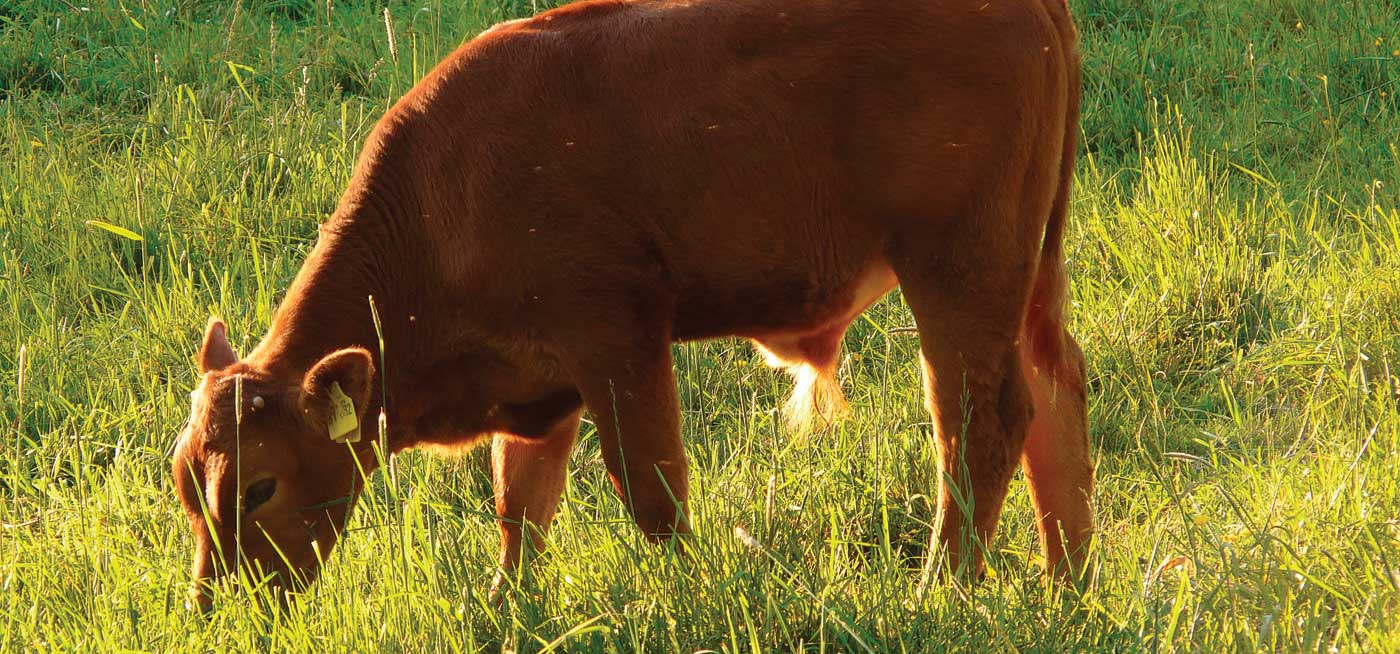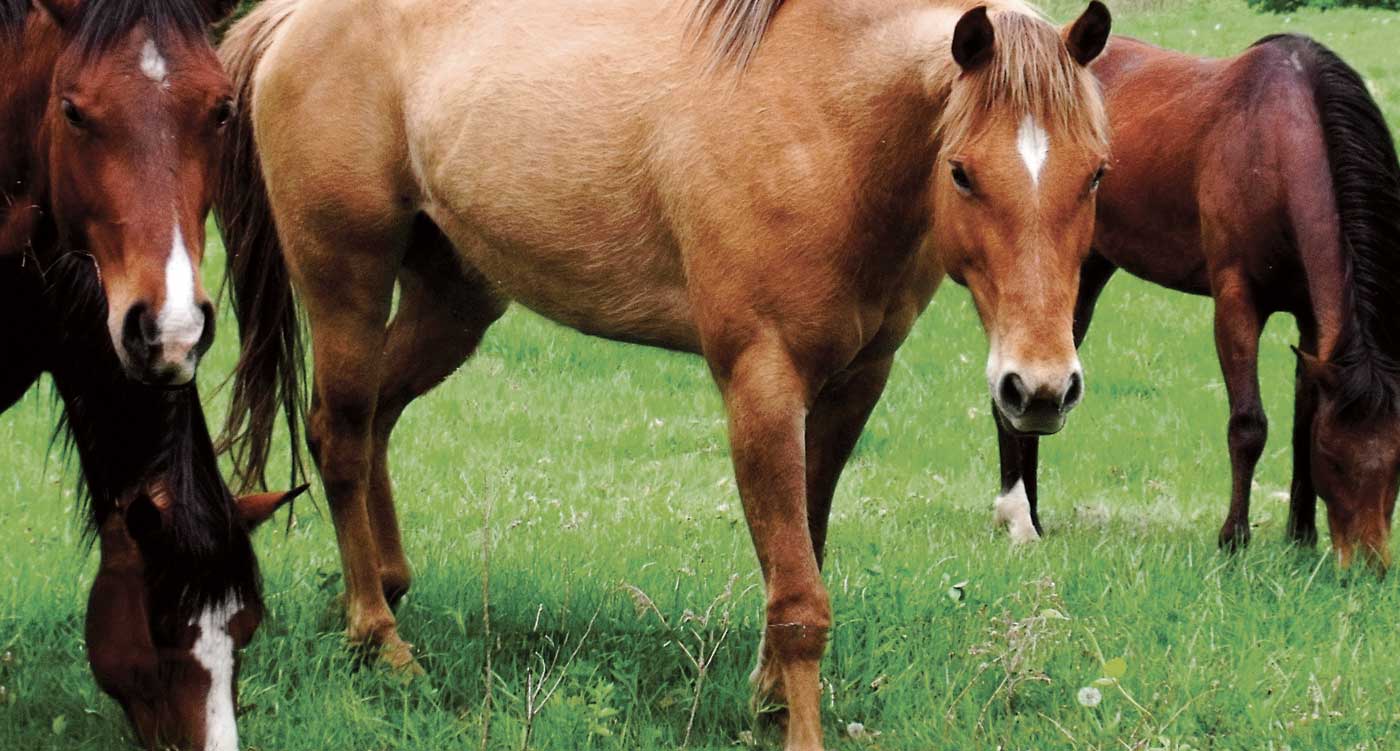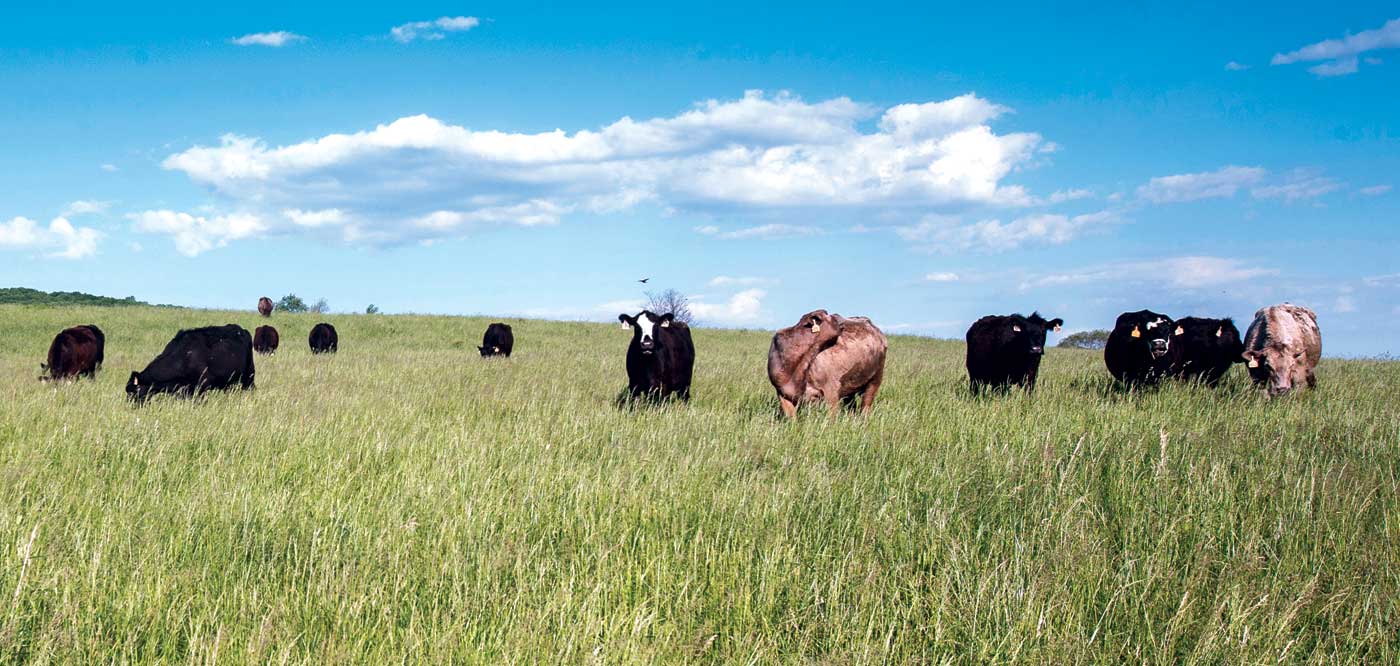-
 LEGUMES &
LEGUMES &
FIELD GRASSESDryland Hay & Pasture Mix
Whether you are looking for individual forage seeds or desire a diverse seed mixture for your livestock, Rivard’s can help find what you are looking for to increase returns on your production acres. We have designed ten premium forage seed mixes which address special conditions we face in our northern regions. If one of our mixes is not quite what you are looking for, please let us know and we can custom mix exactly what fits your situation.
B: Biannual
P: Perennial
A: Annual
| Legumes | Type | Rate/Ac. # | Best Use |
|---|---|---|---|
| Alsike Clover | P | 8-10 | Poorly Drained Soils |
| Berseem Clover | A | 10-12 | Any Soil, Cover Crop |
| Birdsfoot Trefoil | P | 6-8 | Wet Soils |
| Cicer Milkvetch | P | 15-20 | Grazing, Haying, Erosion Control |
| Crimson Clover | A | 10-12 | Nitrogen Building, Cover Crop |
| Crownvetch | P | 15-20 | Grazing, Erosion Control |
| Ladino White Clover | P | 5-8 | Any Soil, Grazing |
| Medium Red Clover | P | 8-10 | Use in Forage Mixes, Soil Building |
| Sanfoin | P | 40-50 | Dry Soils, Grazing |
| White Dutch Clover | P | 5-8 | Nitrogen Building, Ground cover |
| Yellow Blossom Sweet Clover | B | 10-12 | Wildlife, Reclamation, Soil Building |
| Field Grasses | Type | Rate/Ac. # | Best Use |
|---|---|---|---|
| AC Saltlander Wheatgrass | P | 8-12 | Saline Soils |
| Annual Ryegrass | A | 20-30 | Quick Forage, Most Soils |
| Brome, Meadow | P | 10-15 | Grazing, Haying, Erosion Control |
| Brome, Smooth | P | 15-20 | All Soil, Graze, Hay, Erosion Control |
| Creeping Foxtail | P | 5-6 | Wet Soils, Grazing, Haying |
| Crested Wheatgrass | P | 10-15 | Dry Soils, Grazing, Haying |
| Intermediate Wheatgrass | P | 10-15 | Most Soils, Grazing, Haying |
| Italian Ryegrass | B | 15-25 | Quick Forage, Most Soils, Hay, Graze |
| Kentucky Bluegrass-Ginger | P | 20-25 | Livestock Grazing |
| Orchardgrass | P | 10-15 | Grazing, Haying, Well Drained Soil |
| Perennial Ryegrass-Tetraploid | B | 15-35 | Most Soils, Grazing, Haying |
| Pubescent Wheatgrass | P | 10-15 | Most Soils, Grazing, Haying |
| Redtop | P | 8-10 | Wet Soils, Grazing, Haying, Erosion |
| Reed Canarygrass | P | 8-10 | Wet Soils, Grazing, Haying |
| Tall Fescue (Forage/Endo Free) | P | 20-25 | Most Soils, Grazing, Haying |
| Teff Grass | A | 8-10 | Most Soils, Warm Season Haying |
| Timothy | P | 8-10 | Most Soils, Grazing, Haying |
Please ask for seeds & mixtures not listed.
-
 HAY & PASTURE MIXES
HAY & PASTURE MIXES
FOR CATTLE
All Purpose Beef Hay & Pasture Mix:(15#/Acre) Spring/Fall Seeding Depth: 1/4″ |
35% Orchardgrass 15% Forage Tall Fescue 20% Perennial Ryegrass 20% Meadow Brome 10% Timothy |
Dryland Hay & Pasture Mix:(15#/Acre) Spring/Fall Seeding Depth: 1/4″ |
40% Pubescent Wheatgrass 25% Crested Wheatgrass 15% Meadow Brome 10% Tall Fescue 10% Annual Ryegrass |
Bigger Beef Hay & Pasture Mix:(15#/Acre) Spring/Fall Seeding Depth: 1/4″ |
30% Alfalfa 15% Meadow Brome 15% Forage Tall Fescue 15% Perennial Ryegrass 10% Timothy 10% Orchardgrass 5% Medium Red Clover |
Beefcake Hay & Pasture Mix:(15#/Acre) Spring/Fall Seeding Depth: 1/4″ |
20% Pubescent Wheatgrass 20% Crested Wheatgrass 10% Meadow Brome 10% Annual Ryegrass 40% Creeping Alfalfa |
Northern Pasture Mix:(15#-Acre) Spring/Fall Seeding Depth: 1/4″ |
50% Alfalfa 20% Orchardgrass 15% Alsike Clover 10% Timothy 5% Birdsfoot Trefoil |
Legume Hay Mix:(15#/Acre) Spring/Fall Seeding Depth: 1/4″ |
50% Alfalfa 20% Red Clover 20% Timothy 10% Alsike Clover |
Salt Area Mix:(15-25#/Acre) Spring/Fall Seeding Depth: 1/4″ |
20% AC Saltlander (Green Wheatgrass) 20% Western Wheatgrass 20% Intermediate Wheatgrass 20% Smooth Brome 20% Slender Wheatgrass |
Northland Waterway Hay Mix:(25#/Acre) All Season Seeding Depth: 1/4″ |
30% Brome 30% Tall Fescue 25% Perennial Ryegrass 15% Timothy |
-
 HAY & PASTURE MIXES
HAY & PASTURE MIXES
FOR HORSES
Premium Horse Hay & Pasture Mix:(25-30#/Acre) Spring/Fall Seeding Depth: 1/4″ |
40% Orchardgrass 25% Perennial Ryegrass 20% Timothy 15% Ginger Kentucky Bluegrass |
Horseshoe Hay & Pasture Mix:(25-30#/Acre) Spring/Fall Seeding Depth: 1/4″ |
40% Pubescent Wheatgrass 25% Crested Wheatgrass 15% Meadow Brome 10% Tall Fescue 10% Annual Ryegrass |
-
 HAY & PASTURE
HAY & PASTURE
PLANTING TIPSDryland Hay & Pasture Mix
1. Select desired seeds for your acres
Species, varieties, and mixtures to be seeded.
2. Use high quality seed
Rivard’s Turf & Forage has an impeccable reputation for servicing the Hay and Pasture industry with top notch seed. We will get you going in the right direction.
3. Prepare desirable seedbed
Clean & firm so that you do not sink more than 1/2″ with your boot. Good seed to soil contact is essential to maintain proper moisture for germination.
4. Proper timing of seeding
Choose ideal season & conditions. Depending on what you are planting, choose the proper time to allow your seed the best chance to thrive. Keep an eye on future weather forecasts.
5. Choose Planting Method
Drill, no-till, broadcast, frost seed, dormant. Use the planting method which works best for your operation and situation.
6. Manage new seeding
Fertilizer, weed control, grazing & mechanical pressure.
It is important to manage and maintain your new seeding so that plants will establish and take root so that animals will not pull them out in a too early in grazing situations. Follow soil test recommendations on fertilizer requirements and follow labels on using herbicides on weeds. Clipping weeds is also an option.
Find us on social media!
Rivard’s Turf & Forage
Grand Forks, ND 58203-1302
Phone: 800-731-5765
Fax: 866-484-6150
sales@rivards.com
Copyright © 2023 Rivard's Turf & Forage
